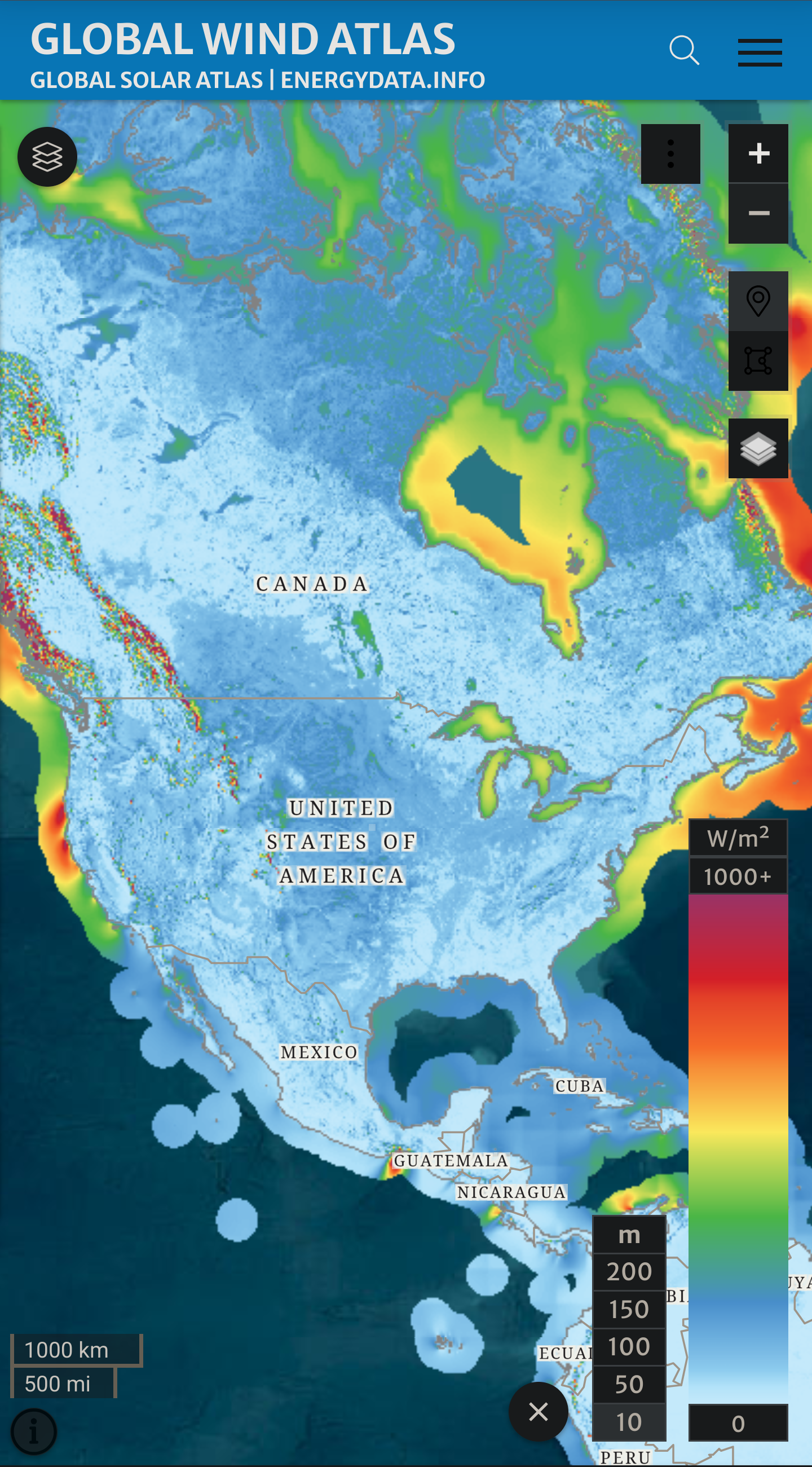People keep reposting this like it’s a gotcha.
It’s not
If prices are negative most of the day there is less incentive to provide the capacity that’s needed during the night. The money for capex has to come from somewhere so it goes up significantly at night. And of course the negative price isn’t “real”, it just means power plants will shut down for swaths of the year until it’s affordable to keep the remainder running. Which then means lower average capacity on days that are cloudy, or additional maintenance on systems that only run in the winter. So then people throw battery stuff around… batteries are expensive. Really, really, really, really expensive. So you have to find a way to keep capacity up that’s not absurdly expensive or hard to maintain, or you have to keep all your fossil fuel plants at the ready while producing $0 in income to offset the upkeep, which…yes, gets passed to the consumer.
I know people want to simplify the national grid which spans across all continental states and connects to literal billions of devices producing and consuming power…but it’s actually kinda complicated.
wow, its almost like the government that we pay taxes to should be what’s powering the country and not private corporations that are only concerned about profits 😋
Hear me out: a giant water balloon. Roughly the size of the sun.
Ughh, no, negative prices aren’t some weird “capitalism” thing. When the grid gets over loaded with too much power it can hurt it. So negative prices means that there is too much power in the system that needs to go somewhere.
There are things you can do like batteries and pump water up a hill then let it be hydroelectric power at night.
But it doesn’t say “it can generate too much energy and damage infrastructure”, they said “it can drive the price down”. The words they chose aren’t, like, an accident waiting for someone to explain post-hoc. Like, absolutely we need storage for exactly the reason you say, but they are directly saying the issue is driving the price down, which is only an issue if your not able to imagine a way to create this infrastructure without profit motive.
Yeah mate. The people writing here are economists not engineers, and that’s the professional language for what they’re talking about in their field. It’s like if a nuclear engineer said “oh yeah, the reactor is critical” which means stable.
I hear the point your making and the point OP made, but this is how really well trained PhDs often communicate - using language in their field. It’s sort of considered rude to attempt to use language from another specialty.
All of that context is lost in part b.c. this is a screenshot of a tweet in reply to another tweet, posted on Lemmy.
The way it’s supposed to work is the economist should say “we don’t know what this does to infrastructure you should talk to my good buddy Mrs. Rosie Revere Engineer about what happens.”
All I know about nuclear reactors is that prompt critical is the “Get out of there stalker” one.
Economists think in terms of supply and demand. Saying it drives prices down or negative is a perfectly good explanation of a flaw in the system, especially if you’re someone on the operating side.
this feels like someone just looking for an argument… having negative pricing is a problem, and yes there are solutions like hydro and battery… hopefully this encourages that infrastructure to be created!
I feel like having a colossal battery pack could help with that problem.
Absolutely. The hydro thing is really just a water battery, it’s just stored in potential kinetic energy instead of chemical energy. But sodium cells are starting to look like a good option for chemical energy too.
It can, but people need to build it.
Yep, and the cost difference between those times should make this very cost effective.
I see this posted a lot as if this is an issue with capitalism. No, this is what happens when you have to deal with maintaining the power grid using capitalism as a tool.
Power generation needs to match consumption. Always constantly the power grid must be balanced. If you consume more than you can generate, you get a blackout. If you generate more than you use, something catches fire.
Renewables generate power on their own schedule. This is a problem that can be solved with storage. But storage is expensive and takes time to construct.
Negative prices are done to try and balance the load. Its not a problem, its an opportunity. If you want to do something that needs a lot of power, you can make money by consuming energy when more consumption is needed. And if you buy a utility scale battery, you can make money when both charging and discharging it if you schedule it right.
That’s not renewables being a problem, that’s just what happens when the engineering realities of the power grid come into contact with the economic system that is prevalent for now.
I see this posted a lot as if this is an issue with capitalism. No, this is what happens when you have to deal with maintaining the power grid using capitalism as a tool.
The framing of it as the problem being that the price is going down rather than that excess power is feeding into the grid is what makes it an issue with capitalism. The thing you should be questioning is why MIT Technology Review is talking about some consequence of the problem that only exists because of capitalism instead of talking about the problem itself.
And before you downvote/object with some knee-jerk reaction that I’m being pedantic, consider this alternative way of framing it:
The opportunity is that solar panels create lots of electricity in the middle of sunny days, frequently more than what’s currently required, so it is necessary to develop new flexible sources of demand so that the excess energy doesn’t damage the power grid.
That’s pretty vastly different, isn’t it?
MIT Technology Review is talking
they did talk about this many years ago. This is a very old screenshot that has been around the internet for probably a decade at a guess. You might notice the check mark because this was from a time that twitter actually vetted sources. There’s nothing wrong with a publication having bad takes on occasion. That does happen now and again.
The telling part is the fact that this one single tweet keeps being reposted repeatedly, with the reply as if this is a substantive criticism of capitalism.
Also, fwiw, you can curtail wind turbines incredibly quickly. They’re the quickest moving assets on an electrical grid typically. So you are using them to balance the grid quite often. You can just pitch the blades a bit and they slow or stop. it’s not really a tech problem, but a financial one like you said.
I’m not sure much about solar curtailment, other than the fact that they receive curtailment requests and comply quite quickly as well.
This is a problem that can be solved with storage. But storage is expensive and takes time to construct.
true. thing is, they’ve seen it coming for a decade, and knew it needed to happen. It shames me that we’re just now trying to pick up the storage side when we’ve had ample evidence the need was growing rapidly.
Nice comment! Thanks.
Just to be clear this can’t be solved with storage. Currently it can be but not permanently.
For ease of argument let’s say the grid runs 100% on solar with batteries that last a day. For 100% solar you need to build power for when demand is highest, winter, and supply is lowest also winter. Come summer demand is lowest and supply is highest. You can’t store all that energy in summer because you got fuck all to do with it.
It’s a really weird cost saving exercise but basically when supply is massively abundant it has to be wasted. No one is going to build that final battery that is only used for 1 day every 10 years.
Bringing it all together. In a 100% renewables grid with solar, wind, hydro and batteries a lot of electricity will be wasted and it will be the cheapest way to do it. Cheaper than now.
Quite a few people talk about this on youtube. Tony Seba and rethinkx is the best place to start in my opinion.
Hydo power can be used as storage, and can generate power on-demand. I’d recommend avoiding YouTube if you want reliable information.
Then tell me why the mechanism to control production via the solar panels themselves hasn’t been implemented? I’ve seen several viable options, including covers that are manual or even automated and powered by the excess energy…
South Australia has run into this problem and implemented a solution.
When the solar exports in a section of the grid exceeds the local transformer’s limits, a signal is sent to all of the inverters in that section to limit the export rate. The same signal can be send to all solar inverters in South Australia if the entire grid has too much renewable energy.
This signal only limits the export to the grid, so the homeowner can always use their own solar power first. The permitted export is guaranteed to be between 1.5kW and 10kW per phase.
The was a minor oversight during implementation. Homeowners on wholesale pricing would often curtail or switch off their solar inverters if the prices went negative. If the grid operator sent a signal to reduce the export rate, it would override the homeowner’s command and force a 1.5kW export during negative pricing (costing the homeowner to export). No-one considered that anyone might not want to export solar all of the time.
Something catches fire lol what, as if they can’t just disconnect the solar cells if they run out of batteries
You can do. If you don’t that’s when you get the fire, or more likely a whole bunch of breakers flip and you are in a black start situation.
As a solar punk, I have solar panels, some batteries, and all my stuff runs off USB or 12v. I don’t pay utilities
If you’re describing nearly free and unlimited electricity as a problem, you may want to reconsider some things.
It’s a very capitalist way of thinking about the problem, but what “negative prices” actually means in this case is that the grid is over-energised. That’s a genuine engineering issue which would take considerable effort to deal with without exploding transformers or setting fire to power stations
Home owned windmills, solar panels and battery storage solves that.
Edit: Look at this awesome diagram of how it’s done for a hybrid setup that’s about $400 on Amazon.

Home owned windmills are almost a total waste. Its surprising how little electricity they generate especially given how much the cost to buy and install. Some real numbers. A 400w can cost almost $18k to buy and install. A 410w solar solar panel is about $250 + $3k of supporting electronics and parts. And that same $3k can support 10+ more panels. I looked into it myself really wanted it to be worth it for home, but it just isn’t. Now utility grade wind? Absolutely worth it. You need absolutely giant windmills with massive towers, but once you have those, you can make a LOT of electricity very cost effectively.
Solar panels worth it? Yes. Absolutely.
Batteries, not quite there yet for most folks. Batteries are really expensive, and don’t hold very much electricity $10k-$15k can get you a few hours of light or moderate home use capacity. For folks with really expensive electricity rates or very unreliable power this can be worth it financially, but for most every else. Cheaper chemistry batteries are finally starting to be produced (Sodium Ion), but we’re right at the beginning of these and there not really any consumer products for home made from these yet.
Oh yeah, super expensive. /s
https://www.amazon.com/dp/B087BY2YV7/?
The first link that came up: https://www.bobvila.com/articles/best-home-wind-turbines/
Ahh I get it now. You have no idea what you’re talking about. You have the smallest understanding of something and assume that is everything. You’re so very far away from understanding the practical applications and limits. You’re also clearly not interested in learning, so I’ll leave you to your impractical delusions.
Oh I’m willing to learn. Explain it to me.
Did you not look at the specs on that product? It only produces energy when winds are above 7mph and don’t actually hit the rated output unless the winds are almost 35mph.
Almost none of the country averages an amount of wind power per square meter equivalent to the rating on home turbines at 10 meters above ground level (yellow and red on this map):

Compare to this map of average insolation:

It’s a hybrid solar and wind. Also, that’s why you have batteries for storage.
Why not skip the middleman and go straight solar, then?
Wait so the same people that can’t drop 500 USD for an emergency are expected to drop 300 USD for a wind turbine and provide the installation of it to boot is that right
“put the excess energy into batteries” is an idea, and is already pretty much what is done, but the large scale implementation still requires a lot of time, effort, and expense.
How, exactly, does that solve anything? It’s not like we can add some kind of magic automatic residential cutoff system (that would just make it worse) and residential distribution is already the problem! Residential solar is awesome (tho home batteries are largely elon propaganda…) but they only contribute to the above issue, not solve it. There are ways of addressing it, but they’re complicated and unglamorous.
I don’t see why home batteries are propaganda. Those prices are plummeting and they have decent payback times in some markets.
The reasons for getting solar is the same reasons for getting batteries.
Because home batteries, while provisionally useful in the same way as a standby generator (though the generator is going to be far more eco friendly than the batteries over their respective lifetimes), is a vastly inferior solution to the implementation of even local grid scale solutions. Also because there is essentially 0 infrastructure designed to handle said batteries, they wear out quite quickly at home scales (unless you’re using uncommon chemistries, but if you’re using iron-nickle batteries you’re not the target audience here) and because Elon popularized them with his “powerwall” bullshit entirely to pump the stock value of Tesla’s battery plant (which is it’s own spectacular saga I encourage you to look up, it’s a real trip).
Batteries in the walls are useful in niches, but the current technology which uses lipo/lion/lifepo4 chemistries is inherently flawed and a route to both dead linemen and massive amounts of E-waste. They could be useful potentially, but as it stands, it’s really bad right now.
You need to look up how much grid storage lithium batteries are being built. It’s exponential growth. Faster than solar.
The reason it’s worthwhile is because solar makes energy with 0 or near 0 price to the owner in certain places, if they store that and use it for later they save money. There are cost calculators out there and for certain markets they make sense.
Of course Tesla pushes it they got a product people want and it makes the consumer and Tesla money. Win win. That’s business, nothing shady about that.
Yes batteries are better on the grid but that’s for exactly the same reasons why solar is better on the grid.
O…kay but that doesn’t address anything I actually said.
How, exactly, does that solve anything?
After installation, a home owner has free electricity? I’m not trying to solve the issues for the power grid people, they have teams of people for that.
Spain and Portugal had almost complete blackouts today. You know who wouldn’t have had blackouts? The people with their own solar panels and windmills.
I acknowledge that there’s no real way to communicate sincerity online, but I’m gonna go ahead and promise I’m not trying to be a dick here when saying this:
a home owner has free electricity
I think you’re bonking up on the Dunning Kruger limit here, because that’s absolutely not how it works. Not only are the vast majority of homes not candidates for useful solar installs (you can pay someone to do it, but holy cow nearly every residential solar installer is a scam looking at you, Lumio International (how’s that RICO case going?)), but solar for home-use power generation is very much not the norm for a whole host of reasons (dead linemen one of the biggest ones) and the safety considerations for implementing it generally make it an onerous enough task to manage that it’s appeal is restricted largely to special interest users (homesteaders, preppers, S&R, power system enthusiasts, van life, etc ). There are ways this could be mitigated, but it would require a massive grid overhaul and additional constant upkeep beyond what any current grid already requires.
Here in Australia 37% of households have rooftop solar. Hardly “only special interest groups”.
Not only are the vast majority of homes not candidates for useful solar installs
Australia is an edge case for everything solar and I’ll quite happily admit that! Yay Australia, well done. That said I’d be very willing to bet that the majority of those are not-above-50%-ideal installs (don’t take that bet, I’m cheating)
Hardly “only special interest groups”
Sorry, you’ve misunderstood, I was talking about direct home power generation being special interest, not residential solar in general. Aussies don’t have a higher rate for direct power generation than anywhere else because grids are, by and large, all suffering from the same fundamental design issues. I’m not at all attempting to argue that solar installs in general are special interest, and especially with the incredibly well thought out incentives the aus gvmt has been offering for both new construction and residential conversion/installation. 100% best handling of it in the world right now.
In no home outside of fringe uses are any lights 12vdc, with the exception of maybe led strip lights for undercabs. They’re all designed for 120vac. That lightbulb in the diagram is an e37/medium base for 120vac.
Nothing an open/close gate couldn’t fix. The real problem is how overly complicated we feel we need to make things.
This is some real “basic biology” level thinking here. Even if it were as simple as “Pull the lever Krunk!” then you’ve just turned all that solar infrastructure into junk for the majority of the time that we need power.
People use the vast majority of electricity in a day in the afternoon and at night - times that are noticeably after the peak solar production time. So you have all that energy going into the system with nowhere to go because battery technology and infrastructure isn’t there, and then no energy to fulfill the peak demand. This is an issue nuclear runs into as well because a nuclear plant is either on or off and isn’t capable of scaling its power to the current demand.
There are times where power companies have to pay industrial manufacturing facilities to run their most energy consuming machines just to bleed extra energy out of the grid to keep it from overloading and turning into a multi-million dollar disaster that could take years to get people back on the grid.
Couldn’t solar farms just strategically disconnect some of their panels from the grid to avoid that? Solar panels are always collecting energy, but if you disconnect them that energy just goes into making them a bit warmer rather than overloading the grid.
You can have your own batteries as well. If those then get overloaded, disconnect.
Sorry for the naive question, but is it not possible to send the excess electricity to the ground (in the electrical sense)?
It would definitely need to be ground in a literal sense.
And even the earth has its limits. Soil is only so conductive, pump enough energy into it and you’ll turn it to glass (which won’t conduct anymore).
To effectively waste electric power like that would take quite a bit of effort. It would be easier to make a giant heater that heats up air. But that would of course also be absurd. Just turn off the wind turbines etc. to reduce power generation.
The grid is always over energized. That’s not a problem. Large solar and wind farms connect to the grid with great specificity about the maximum amount of energy they will put on the lines. The problem would be not enough energy. Batteries are beginning to solve the dispatch energy issue with renewables. As long as republicans don’t get their way and ruin renewable energy with unfair fossil fuel mandates, the grid will continue to modernize in this way and we’ll be fairly independent of fossil fuels in the future for electricity.
No it’s not, it’s energized just right. Otherwise you run into either over or under frequencies. Both pretty catastrophic.
Not an engineer but I sometimes watch them on YouTube.
Could you not just set up a breakout point and have it arc to ground? If the power source is renewable then wasting a little when you have a full grid shouldn’t be a big issue. I’m thinking something along the lines of StyroPyro’s arcing plasma flamethrower should chew up plenty of excess power if you scale it up. As you ramp your total storage up toward 100% capacity I’d start shutting off inputs (disconnecting solars, etc) and then have what’s basically a big old Tesla coil to vent excess power over 95% capacity.
There’s obviously a lot of issues with that idea, but I’d like to throw my wholehearted support behind it anyways, just to see the expressions my FCC/Radio buddies would make when they realize someone’s running a MW-scale tesla coil as some kind of electrical blowoff valve. I can’t easily tell you the exact size of the area you’d utterly obliterate all radio communications in, but it’d be hilariously large.
Faraday cage should cover that no? Styro even mentions in the linked video that he needed to encapsulate his workshop in one in order to not get angry visits from the FCC. I’m sure for something scaled up like this you might want to nest a couple of them together.
Again, not an engineer, I could be (and likely am) wildly off base here. Not sure what makes it such a terrible idea though. I am pretty certain that a MW-scale Tesla coil probably wouldn’t blow out a larger area of communications than, say, nuclear testing would, and we do that all the time in the Midwest.
Mmmmm no, a bit of napkin math here but the RF this thing would throw off would just melt any faraday cage smaller than a midsized town.
Also no, there are not nuclear tests all the time in the midwest.
In fairness, capitalist expansion is predicated on generating and reinvesting profit. If you build an array of solar panels and generate a revenue less than the installation+maintenance cost of the panels, you don’t have any more money to buy new panels and expand the grid.
That is, under a privatized system, anyway. If you’re a public utility and your goal is to meet a demand quota rather than raise revenue for the next round of expansion, profit isn’t your concern. You’re looking for the lowest possible installation/maintenance/replacement cost over the lifetime of the system, not the high margins per unit installed.
Incidentally, this is why vertically integrated private firms that consider electricity an expense rather than a profit center have been aggressively rolling out their own privately managed solar/wind arrays. When the concern is minimizing cost rather than maximizing revenue, and you can adjust your rate of consumption to match the peak productive capacity of your grid, then solar/wind is incredibly efficient.
thats why Westinghouse had to crush Nikolai Tesla. you can’t meter wireless power.
Great comments in here that understand the actual issues, instead of, ya’ know, the usual.
Something I haven’t seen in the thread: Can someone address the costs of keeping the infrastructure maintained? Free power sounds great, but it can never be free. Entire industries must be paid to manufacture pylons, wire, transformers, substations, all that. Then there are the well paid employees who are our boots on the ground. (Heroes to me!)
How is solar disrupting the infra costs?
All/almost all net metering plans will still charge access and/or infrastructure fees.
Solar is at it’s most cost effective on buildings that use a lot of power during the day, such as factories and office buildings.
That way, you’re using most, if not all, of the power you generate, rather than selling it to the grid at a lower cost.
Never forget the plot of space balls is that they figured out how to monopolize the air.
It was released in 1987.
Mel Brooks is the goat.
I’m going to a screening of this movie on May 4th actually. :)

“Well you see there is generations and generations of ghouls that have made their entire livelihood off the established and continued monopolization of vital resources such as water and power and for some reason the rest of us haven’t gotten together and solved that clear and obvious threat to everyone and everything collectively, I know I don’t get it either.”
Hear me out: pump the excess solar power from the sunny side of Earth via maser into space at a geostationary microwave mirror array that reflects and focuses power back at a ground station on the dark side of Earth.
You can read the Technology Review article here discussing why this is problematic beyond a JPEG-artifacted screenshot of a snappy quip from a furry porn Twitter account that may or may not have read the article beyond the caption. We need solar power plants to reach net zero emissions, but even despite their decreasing costs and subsidies offered for them, developers are increasingly declining to build them because solar is so oversaturated at peak hours that it becomes worthless or less than worthless. The amount of energy pumped into the grid and the amount being used need to match to keep the grid at a stable ~60 Hz (or equivalent where you live, e.g. 50 Hz for the PAL region), so at some point you need to literally pay people money to take the electricity you’re producing to keep the grid stable or to somehow dump the energy before it makes its way onto the grid.
One of the major ways this problem is being offset is via storage so that the electricity can be distributed at a profit during off-peak production hours. Even if the government were to nationalize energy production and build their own solar farms (god, please), they would still run up against this same problem where it becomes unviable to keep building farms without the storage to accommodate them. At that point it becomes a problem not of profit but of “how much fossil fuel generation can we reduce per unit of currency spent?” and “are these farms redundant to each other?”.
This is framed through a capitalist lens, but in reality, it’s a pressing issue for solar production even if capitalism is removed from the picture entirely. At some point, solar production has to be in large part decoupled from solar distribution, or solar distribution becomes far too saturated in the middle of the day making putting resources toward its production nearly unviable.
I’ve known about the issue with a lack of ways to store the energy produced for about 5 years now, does it seem like we’re making any steps in it recently? Also how does it work in a “green” fashion to produce all of the batteries necessary for that sorts of energy storage, I feel like that’s going to be one of the next discussions about how “pure” this method is.
In other words… Maybe 29 word Twitter captions aren’t a great way to discuss issues?
Nah, I see nothing wrong with an information diet composed of random people with no background sharing their pet conspiracy with 5 million people on TikTok that they learned from three minutes with ChatGPT, furry porn accounts clapping back on Twitter to an out-of-context 29-word quote from an MIT Technology Review article (reshared so many dozens of times that the quality has noticeably degraded), or a picture generated in a Russian disinformation farm showing a muscular Donald Trump rescuing crying orphans from drowning in Hurricane Helene while corrupt FEMA agents loot their houses.
God fucking help us.
But on the plus side,
On the plus side I guess: accessing good, robust information has literally never been easier as long as you’re media-literate enough not to fall into the landfill of trash information that you’re walking over.
- During its start in the 2000s and early 2010s, Wikipedia was like a shadow of what it is today. As an example, take a look at the article for the element oxygen in 2006 (ignore the broken templates) and the article today. Its editors were just as smart, well-meaning, and hard-working, but guidelines and a deeply entrenched culture hadn’t emerged around making sure things are as verifiable, reliable, independent, unbiased, inclusive, and comprehensive and as possible. It’s kind of insane how much you can find there now as a starting point for further research. Wikipedia also forced the web-ification of Britannica, meaning even if you deeply distrust Wikipedia for some reason, you no longer need to pay hundreds to have an encyclopedia in your home.
- Additionally, I imagine there are serious, experienced editors who are using LLMs to great effect as essentially a search engine on steroids to find obscure information, thereby speeding up their work (and they have the media literacy from years or decades of editing Wikipedia to wield this responsibly). Those who use it irresponsibly seem to be very quickly found out, although because I can’t prove a negative, I can’t say how much slop has slipped through the cracks.
- Extremely niche hobbies and specialties have e.g. YouTube channels, subreddits/communities, etc. dedicated just to them providing a fantastic wealth of knowledge. Right now, I can go watch Gutsick Gibbon on YouTube to catch up on various findings in primatology from a PhD candidate on the verge of becoming a doctor. I can watch Gamers Nexus for highly comprehensive breakdowns of tech products. Realistically, I can self-teach in ways I never could have 20 years ago as long as I’m responsible.
- Piracy has arguably never been easier to gain access to paywalled research papers, books, etc. There’s a movement in academia to make research open-access.
- Software is moving more and more toward open-source. This gives entrenched, capitalist power structures increasingly limited control over people and opens up this knowledge to everybody.
That all being said, things are really dire because so many people really lack the basic media literacy skills to utilize these tools and avoid the ocean of shit around them.
America: …Nah, this is fine. In fact, let’s elect the platforms’ owner-influencers. scrolls happily
I do like how this Twitter account, in the rush to blame capitalism, overlooked the fact that the sun rises and sets every day.
That’s exactly why i want it, but i can’t in our appartment…other than a single mobile panel on our balcony and a mobile battery, which will cost about €1000 and will only allow me to partially run some electric devices.
deleted by creator


















